A bridge to the Holy Land
The origin of Barletta (or Baruli) is closely connected to the events of the nearby ancient cities of Canne and Canosa. The area of the city, which probably served as the seaport of Canosa, hosted the inhabitants of these cities after their destruction by the Goths and Lombards. In the following centuries the settlement also accepted other migratory flows which contributed to defining its shape, through the construction of hamlets.
Overlooking the Adriatic and connected by important ancient roads, Barletta became an important port for pilgrims heading to the Holy Land in the Middle Ages, and starting from the Norman age it gained the permanent status of royal city, not subject to any feudal lord.
Its privileged status was also confirmed by Frederick II, who established the Scholae ratiocinii there, and by Charles I of Anjou, who chose it as the location of the Royal Mint.
In the second half of the fifteenth century, the pre-eminence of Barletta as a "state-owned city" is also shown by the choice of King Ferrante of Aragon, who was crowned in the mother church on 11 February 1459. In medieval times, because of its central role in Mediterranean trade, the port city imported prestigious artifacts from Constantinople, such as the famous Colossus. Despite this, Barletta struggled to gain full recognition as a city, as it had no episcopal seat until 1860. To support its aspirations it therefore attempted to build a civic identity around the mother church, claiming the legacy of Canne, hosting two deterritorialized bishops from the Holy Land: the bishop of Nazareth and the Patriarch of Jerusalem. The challenge between thirteen Italian and thirteen French knights during the Franco-Spanish war for the conquest of the Kingdom of Naples (1503), is inextricably linked to the city. The events leading to the episode took place in Barletta, where the Italians in the Spanish army were stationed when they got involved in the duel. They returned as victors to pay homage to the Virgin.
Lastly, the city was home to several Renaissance intellectuals, including the doctor and treatise writer Mariano Sano or the jurist and poet Mario di Leo. It cannot be ruled out that the city’s elites had nothing to do with the widespread phenomenon of antiquities reuse, in the case of Barletta originating from Cannae and Canosa.
What to see here
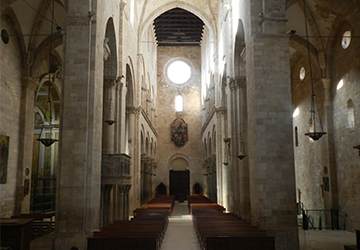
Cathedral of Santa Maria Maggiore
The Cathedral is the most important sacred building in the city, and has been the site of very important events over the centuries, such as the coronation of the king of Naples, Ferrante of Aragon (1459).
Read all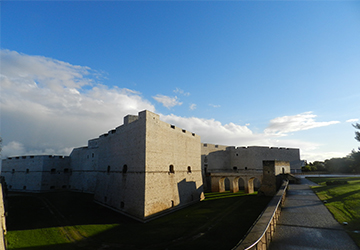
Castle
Documented in sources since the early thirteenth century, the Castle of Barletta experienced a phase of profound renewal in the Frederick and Angevin periods.
Read all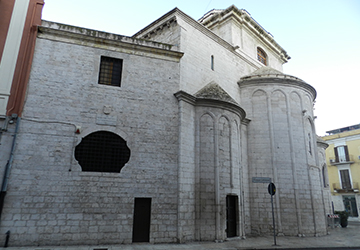
City Archive
Built next to the Church of the Holy Sepulchre, the building served as an archive of the city's writings in the sixteenth century
Read allPalazzo Damato
Palazzo Damato is one of the most significant places in the city as it hosts what is commonly called the Cantina della Sfida, the place where the spark that would lead to the famous Challenge of Barletta was struck.
Read all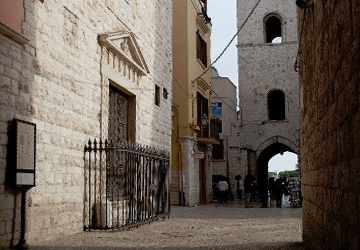
Church of San Pietro
A few steps from the Cathedral of Santa Maria Maggiore, the oratory of San Pietro was built by the ancient archconfraternity of the Santissimo Sacramento.
Read allChurch of San Ruggiero
The building testifies to the close link between Barletta and the city of Canne, also evident in the construction of the village where the church of San Giacomo was built, which welcomed the refugees from that city.
Read all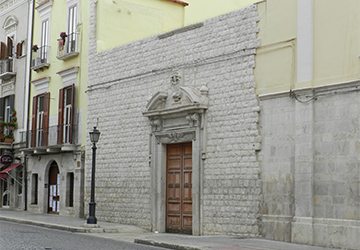
Church of Santa Chiara
The church of Santa Chiara was founded in the 15th century, but not much remains of its Renaissance phase.
Read all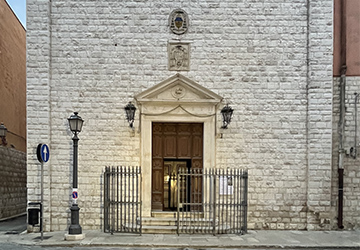
Church of Santa Maria di Nazareth
The history of the church of Santa Maria di Nazareth, evidence of the very close relationships between Barletta and the Holy Land, is complex.
Read all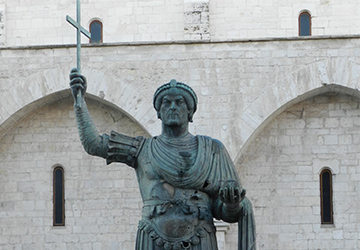
Colossus
The Colossus of Barletta is the city’s best-known monument: commonly referred to by the name of the emperor Heraclius, in truth it escapes certain identification.
Read allCity walls
The remains of the ancient city walls are visible at various points of the city.
Read all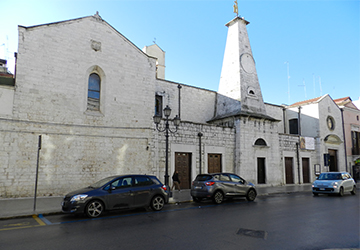
Church of San Giacomo
Probably founded at the end of the 11th century together with the adjoining village, where the refugees who arrived from Canne were hosted, the church of San Giacomo belonged to the Benedictines of Monte Sant'Angelo for a long time.
Read all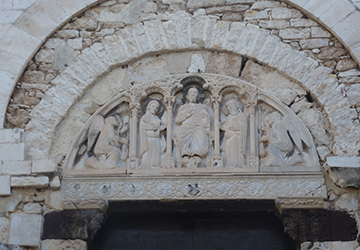
Church of Sant’Andrea
Documented as early as the 12th century, the church of San Salvatore was dedicated to Sant'Andrea.
Read allThe Knight’s Ospedale
The Ospedale was built close to the ancient city center, on the ancient Strada del Cambio, one of the main arteries of the city, today known as Corso Cavour, and near two important churches: Santa Chiara and Santa Lucia.
Read allPalazzo Affaitati
Also known as Palazzo Samuelli, from the name of the family who still lived there in the eighteenth century, the building had belonged to the important Affaitati family
Read all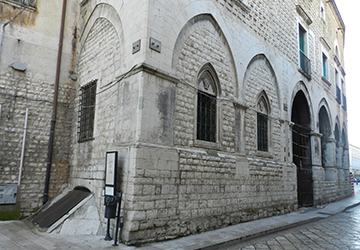
Palazzo Bonelli
he palace, which bears the name of the Bonelli family who owned it from 1685, had belonged to the noble Della Marra family during the Renaissance.
Read allPalazzo Della Marra
Built in the sixteenth century over a pre-existing building, before being acquired by the Della Marra family in 1633, it belonged to Lelio Orsini, count of Pacentro, Tagliacozzo and Oppido
Read allPalazzo Pretorio
The construction of the Palazzo Pretorio, new headquarters of the Universitas, became necessary when, in 1540, the Palazzo del Capitano (Palazzo dell'Arco) was given to the Benedictine nuns of the Annunziata to be used as a convent.
Read allPalazzo Santacroce
Palazzo Santacroce was built in the 15th century in the square in front of the Cathedral of Santa Maria Maggiore, of which it occupies part of the churchyard. It takes its name from the family that took over from the Queralts in the 18th century
Read all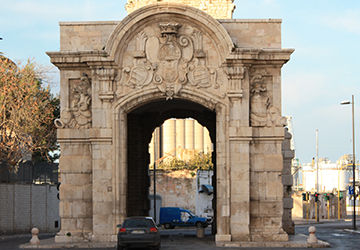
Porta Marina
The gate, which today appears as an isolated monument, is the only surviving example in the city of the gates incorporated into the city wall system.
Read allPort
The port of Barletta dates to the 2nd-4th century AD. The interpretation of certain documents suggests that the Colossus, currently at the Holy Sepulchre, was initially located in the port of Barletta.
Read allPalazzo dell'Arco
The palace was built in 1473 by Francesco de Arenis, executioner of Terra di Bari and Terra d'Otranto, and it was the house of the Captain. In the sixteenth century it became a monastery and hosted the Benedictine nuns of the Annunziata.
Read all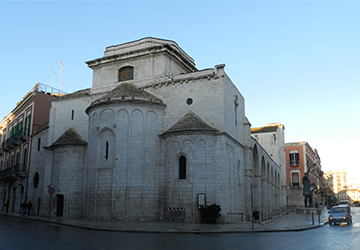
Holy Sepulchre
Listed from the 12th century among the possessions of the Holy Sepulchre of Jerusalem, the church initially stood outside the city perimeter. With the expansion of the city walls, in 1162, it was incorporated within the city.
Read allRead more
Scientific fact sheet of the city of Barletta